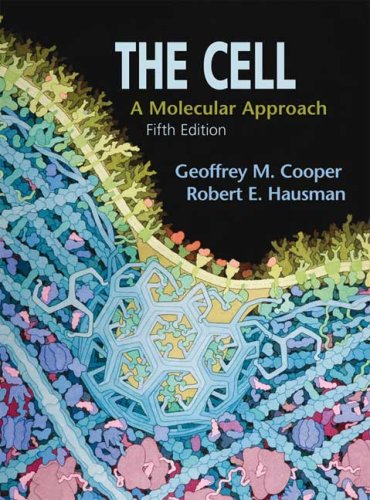The Cell: A Molecular Approach book
Par richard wendell le vendredi, juillet 22 2016, 15:38 - Lien permanent
The Cell: A Molecular Approach by Geoffrey M. Cooper, Robert E. Hausman


Download eBook
The Cell: A Molecular Approach Geoffrey M. Cooper, Robert E. Hausman ebook
ISBN: 0878932194, 9780878932191
Format: djvu
Publisher: Sinauer Associates, Inc.
Page: 848
This approach allowed them to identify cellular processes and molecular interactions that could not be otherwise observed. Cell Adhesion Molecules in Gene and Cell Therapy Approaches for Nervous System Repair Stem Cell Research. Biologists have previously developed several ways to get large molecules into cells, but all of them have drawbacks. Research Summary: Driven by the biological question of “how molecules work together to create something living”, Dr. The question of how cells form tissues has been, and still remains, a problem. To determine the role that the two microRNAs play, the scientists bred genetically modified mice that had an abnormally large number of these molecules in their heart muscle cells. Though the single molecule approach has been proven to be a powerful method to answer questions about single enzymes, Loparo is motivated to further develop these techniques to study multi-protein complexes. To begin, can you explain the mission of the Max Planck Institute for Molecular Cell Biology and Genetics (MPI-CBG) in Dresden? In the TGT approach, Ha and Wang repurposed DNA strands, using them as tethers for ligand molecules, to test the tension required to activate cell adhesion through integrin. PNNL scientists combined single-molecule microscopy and nanoparticle engineering to show how nanoparticles interact with lung cells. In putting together Cornell's New Life Sciences Initiative, the university has just announced its cornerstone piece for the restructuring of the life sciences on campus -- the Institute of Cell and Molecular Biology. Researchers at MPI-CBG are tackling this issue from different angles, and we take a multidisciplinary approach to address this. What's next: Nanomaterials come in many sizes, shapes, and physical properties. Joseph Loparo is interested in using single-molecule techniques to understand how the multi-protein machines of the cell function. A progressive appreciation for its unique strengths is attracting research that spans an exceptionally broad swath of physiological phenomena—from the function of nucleosomes to protein diffusion in the cell membrane. A time as it interacts with the living cell. Results provide insights about possible effects of inhaled nanomaterials.